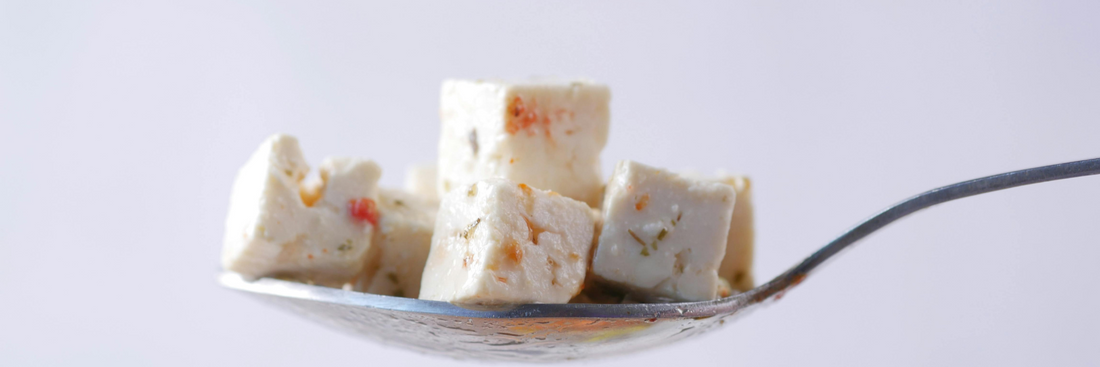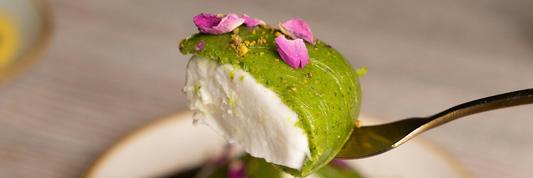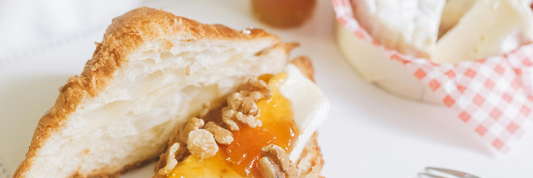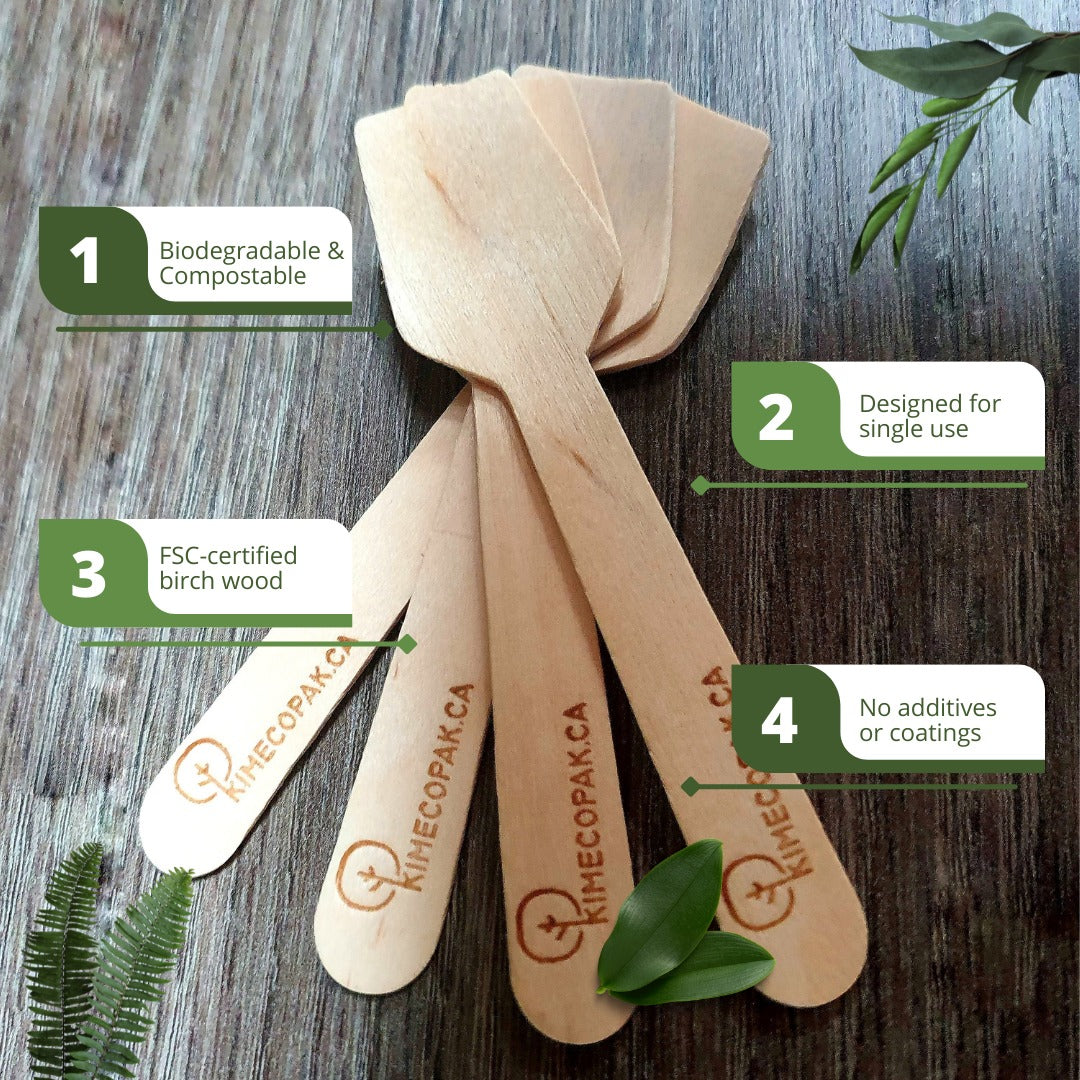Discover how to make fresh homemade feta cheese with simple ingredients and traditional methods. Learn effective aging, storage, and eco-friendly packaging tips to keep your feta flavorful and long-lasting. Perfect for home cooks and small food businesses.
- Feta Facts – Everything You Need to Know
- Types of Feta Cheese: A Guide to Varieties, Flavor, and Uses
- Feta Cheese Explained: Origin, Health Benefits, and Serving Ideas
- How to Freeze Feta Cheese Correctly at Home
Why Make Feta Cheese at Home
Making feta cheese at home brings numerous benefits that make it a great choice for home cooks, zero-waste enthusiasts, and busy parents alike. Here are some key reasons to try DIY feta:
- Control Over Ingredients
When you make feta cheese yourself, you decide exactly what goes into it. This means you can ensure cleanliness, quality, and avoid harmful preservatives or additives often found in store-bought varieties. - Safety and Hygiene Assurance
Homemade feta allows you to follow strict hygiene practices and control the entire cheese-making process, giving you peace of mind about food safety for you and your family. - Perfect for Sustainable & Zero-Waste Lifestyles
By making feta at home, you reduce packaging waste and food loss. You can use eco-friendly containers and fresh local milk, contributing to a more sustainable kitchen routine. - Cost-Effective Alternative
Homemade feta is often more affordable than buying premium or imported feta cheese. Once you have the basic ingredients and tools, you can create fresh batches repeatedly, saving money over time. - Enjoy a Fun & Rewarding DIY Food Experience
Making your own feta cheese is a hands-on culinary project that connects you with traditional foodcraft. It’s satisfying to enjoy cheese you made yourself, impress your family, or experiment with variations.
Whether you’re new to cheesemaking or looking for a wholesome, delicious ingredient that fits your lifestyle, homemade feta cheese offers freshness, flavor, and wholesome benefits every time.

Traditional Feta Methods & Greek Feta vs. International Variants
|
Aspect |
Traditional Feta Method |
Greek Feta vs. International Variants |
|
Milk Used |
Traditionally, feta is made using raw or pasteurized sheep’s milk, goat’s milk, or a blend of both. Sheep’s milk contributes richness and creaminess, while goat’s milk adds a distinct tangy flavor. Cow’s milk is generally avoided in authentic recipes. |
Greek feta strictly follows PDO (Protected Designation of Origin) rules, using at least 70% sheep’s milk and up to 30% goat’s milk. Outside Greece, cow’s milk or blends are more common to reduce cost or change flavor profiles. |
|
Culture & Coagulation |
The cheesemaking process begins with adding mesophilic bacterial cultures derived from traditional strains specific to the region. These bacteria ferment lactose, producing lactic acid needed for proper curd formation, flavor, and texture. Animal rennet is commonly used to coagulate the milk naturally. |
Greek feta uses traditional lactic acid bacteria and animal rennet that contribute to its classic flavor and texture. International producers may use commercial starter cultures and microbial or vegetable rennet for vegetarian options or production efficiency. |
|
Salinity / Flavor |
After cutting the curds, they are salted and then placed in a brine solution for maturation. Brining imparts feta’s characteristic salty, tangy, and slightly sharp flavors. The salt also acts as a preservative, controlling microbial activity during aging. |
Greek feta is typically saltier and has a well-defined tang due to longer brining periods and higher salt concentration. Other countries producing feta-style cheese often reduce salt levels, resulting in a milder taste profile. |
|
Texture |
Traditional feta cheese is firm and crumbly with a slightly creamy mouthfeel. Depending on milk composition and aging time, texture can range from softer and smoother to drier and more granular. |
Greek feta’s texture is crumbly yet creamy enough to slice; international versions vary widely — some are firmer and rubbery, while others may be softer with a less crumbly structure, often due to different milk or processing. |
|
Aging / Brine Time |
Typically aged in brine for 14 to 20 days at a controlled temperature (around 16–18°C), then stored refrigerated in brine for up to 2 months or longer. This ripening develops the cheese’s flavor complexity and aroma. |
Greek feta is often aged in brine for several weeks to months, allowing deeper flavor development. International variants may have shorter aging times or skip brining altogether, affecting taste and keeping qualities. |
Additional Notes on Traditional Feta Methods
- Use of Raw Milk vs. Pasteurized Milk
In traditional Greek feta production, raw milk is sometimes used, lending a richer, more complex flavor due to native microflora. However, for safety and regulatory compliance, many producers outside Greece use pasteurized milk while aiming to replicate authentic taste with starter cultures. - Brining Techniques
The salt concentration in the brine typically ranges between 7–10%, with higher salinity slowing down the ripening process and further preserving the cheese. The cheese blocks float or are submerged in the brine, which creates the iconic sharp, salty profile. - Regional Variations in Greece
Even within Greece, different regions produce feta cheese with subtle differences influenced by local milk types, climate, and cheesemaker traditions. For example, feta from the mountainous regions tends to be richer due to higher fat content in sheep's milk. - International Adaptations
Outside of Greece, “feta-style” cheeses are adapted for local tastes and dairy availability. This results in a broad category of cheeses inspired by feta but differing in texture, milk source, saltiness, and aging.
Step by Step Guide to Homemade Feta
Making feta cheese at home is both rewarding and simple. Follow these steps using fresh ingredients and mindful packaging for the best results.

Ingredients Preparation
- Fresh milk: Use 1 gallon (3.8 liters) of whole fresh milk (sheep, goat, or cow’s milk, depending on preference).
- Starter culture: Use a mesophilic starter culture to develop flavor and acidity.
- Rennet: Liquid rennet or tablet, diluted in cool water for curdling.
- Sea salt: For salting the curds and making the brine.
Step 1: Heat the Milk & Add Starter Culture
- Slowly warm the milk to around 32°C (90°F) over low heat.
- Sprinkle the starter culture on top and let it rehydrate for about 5 minutes. Then gently stir the culture into the milk evenly.
- Cover the pot and let the milk sit for about 1 hour at the same temperature to allow fermentation.
Step 2: Add Rennet and Let Milk Set
- Dilute the rennet in about 1/4 cup of cool, non-chlorinated water.
- Stir the rennet gently but thoroughly into the milk using an up-and-down motion.
- Cover and let the milk set for 1 hour until it forms a clean break (curds firm enough that they split cleanly when cut).
Step 3: Cut the Curds & Drain Whey
- Using a long knife, cut the curds into approximately 3/4 inch (2 cm) cubes in a grid pattern.
- Let the curds rest for 5–10 minutes to firm up.
- Gently stir the curds occasionally for 20–30 minutes to help them contract and release whey.
- Pour the curds into an eco-friendly paper bowl or kraft box lined with cheesecloth or butter muslin to drain the whey naturally. Alternatively, hang the cheesecloth bag to drain for 4–6 hours in a cool place or refrigerator.
Step 4: Press and Shape the Feta
- After draining, press the curds with a light weight (around 1–2 lbs) or use the weight of the curds themselves by folding cheesecloth. This helps remove excess whey and shapes the feta.
- Keep the curds pressed at cool room temperature or in the fridge for several hours, turning occasionally to ensure even texture.
Step 5: Salt the Cheese and Brine
- Remove the feta from cloth and cut into blocks or shapes you prefer.
- Sprinkle sea salt evenly over all surfaces and let it sit for 24 hours at room temperature.
- Prepare a brine solution by dissolving 1/4 to 1/3 cup of cheese or sea salt in 1/2 gallon of water. Place the feta cheese in the brine and refrigerate for 3–5 days to develop flavor and preserve.
How Long to Age and Store Feta
Optimal Aging Conditions
- Temperature and Humidity Control:
Beyond just time in brine, aging feta cheese requires precise control over temperature and humidity to develop its signature texture and flavor. Ideally, age feta at 12–16°C (54–61°F) with 80–85% relative humidity. This controlled environment prevents undesirable drying or microbial growth, ensuring consistent maturation. - Brine Maintenance:
Refresh the brine every few days during the initial aging period to maintain salt concentration and freshness. Using a brine of saturated salt (about 8–10%) helps inhibit spoilage organisms while allowing beneficial fermentation to continue slowly. - Turning Cheese Blocks:
Gently turn and flip feta blocks periodically (every 2–3 days) during aging. This practice ensures even exposure to the brine, promoting uniform flavor and moisture distribution.

Long-Term Storage Tips
- Brine Solution Storage:
After aging, feta should remain submerged in brine with a salt concentration of around 6–8%. A lower salinity brine reduces saltiness while preserving moisture. Make sure containers are fully sealed to prevent air exposure that can dry out the cheese. - Packaging Innovations for Storage:
- Vacuum-Sealed Bags with Brine: Vacuum sealing feta blocks with brine can enhance shelf life by minimizing oxidation and contamination while preserving moisture levels.
- Reusable Silicone Containers: For home use, flexible silicone containers with lids provide airtight storage that can be washed and reused, combining convenience with sustainability.
- Wax-Coated Kraft Paper Wrapping: For eco-friendly wrapping without plastic, lightly wax-coated kraft paper can be wrapped around feta blocks after draining for short-term storage in fridge.
- Shelf Life Expectancy:
Properly aged and stored feta in brine can last in the refrigerator for up to 2 months. When stored without brine, feta should be consumed within 7-10 days to avoid drying and loss of flavor.
Preventing Common Storage Issues
- Avoid Freezing:
Freezing feta for long-term storage is possible (as discussed in previous sections), but it impacts texture. For preserving fresh texture and creaminess, brined refrigerated storage is superior. - Mold Prevention:
White surface molds are sometimes natural and safe on cheese rind, but black or colored molds indicate spoilage. Regularly inspect storage containers and brine for clarity, and discard if bad odors or discoloration appear.
Serve and Use Homemade Feta
Beyond Basic Serving – Elevate Your Dishes
- Marinated Feta Appetizers:
Soak feta cubes in olive oil infused with herbs (rosemary, thyme), garlic, chili flakes, or lemon zest. This flavorful, versatile appetizer doubles as a delicious condiment paired with fresh bread or crudités. - Incorporate into Breakfast & Brunch:
Feta pairs wonderfully with eggs crumble it into scrambled eggs, omelets, or atop shakshuka for creamy, tangy contrast. Combine with sautéed spinach or tomatoes for a Mediterranean flair. - Use in Grain & Vegetable Bowls:
Sprinkle feta on warm or cold bowls with quinoa, farro, roasted vegetables, nuts, seeds, and fresh herbs. The salty acidity balances richness and adds umami boost. - Feta Stuffed Pastries:
Homemade feta can be crumbled inside phyllo-dough pies (spanakopita style), croissants, or savory hand pies for flaky, flavorful snacks. - Feta Sauces & Dips:
Blend feta with yogurt, garlic, lemon juice, and herbs to create tangy creamy dips perfect for vegetables, pita, or grilled meats.
Serving Ideas Specifically for Small Food Businesses
- Eco-Conscious Portioning:
Divide feta into portion-controlled servings using compostable or biodegradable packaging such as kraft paper trays lined with parchment, or paper cups with lids. This meets growing customer demand for sustainability without sacrificing convenience. - Branded Cheese Packs:
Customize packaging with eco-friendly inks and minimalist design to highlight handmade, natural, and zero-waste product qualities. Include usage suggestions or recipe cards to engage buyers. - Multipurpose Combo Packs:
Create combo boxes featuring fresh homemade feta with complementary items such as olives, organic cherry tomatoes, or artisanal crackers, all presented in recyclable boxes or baskets. This approach adds perceived value and encourages gift or picnic purchases. - Temperature-Control Packaging Solutions:
For delivery or outdoor sales, pack feta in insulated, compostable containers with natural ice packs made from water or gel in biodegradable wrappers to ensure freshness.
Storage & Packaging Tips
Proper storage and packaging are key to preserving the freshness, flavor, and quality of your homemade feta cheese, while promoting sustainability in your kitchen.
Use Reusable, Food-Safe, Compostable Packaging of Suitable Size
- Select containers and packaging that fit the amount of feta you typically store or sell to minimize air exposure and waste. Options such as paper bowls, kraft boxes, and compostable ice cream cups work well for portioning and storing feta.
- These eco-friendly packaging solutions help reduce plastic use, provide good breathability, and are fully food-safe for direct cheese contact.
- Using compostable and reusable items supports a zero-waste approach and is ideal for small food businesses or home use.
Cleaning and Reusing Your Containers
- After using your packaging, clean food-safe containers promptly by rinsing with warm water and mild soap. Avoid harsh chemicals to preserve container integrity.
- For compostable packaging like kraft boxes or paper bowls, check whether they are compostable after use or can be reused a few times based on condition and manufacturer guidelines.
- Reusable containers such as some kraft boxes can be carefully washed and reused for future feta storage or other kitchen needs.
- Proper cleaning helps maintain hygiene, extending the life of your containers while supporting sustainable practices.
FAQs – Common Questions About Homemade Feta

Can feta cheese be made from cow’s milk?
Yes, while traditional feta is made from sheep’s and goat’s milk, you can make feta-style cheese at home using cow’s milk. The texture and flavor will differ slightly cow’s milk feta tends to be milder and less tangy. Using cow’s milk makes it easier to source locally but may not replicate the classic authentic taste.
Is it possible to use vegetarian or plant-based rennet for making feta?
Absolutely! Vegetarian-friendly rennet, derived from microbial or plant sources, works well in homemade feta cheesemaking. It coagulates the milk similarly to traditional animal rennet. Using vegetarian rennet is a great option for those following plant-based dietary preferences or seeking halal/ kosher alternatives.
How long can homemade feta be stored?
When properly aged and stored in brine in the refrigerator, homemade feta can keep fresh for up to 2 months. Once cut or removed from brine, it’s best consumed within 7 to 10 days to maintain optimal flavor and texture. Always store in food-safe, airtight containers and check for any signs of spoilage before use.
Conclusion
Making and storing your own feta cheese at home offers numerous benefits: full control over ingredients, improved food safety, reduced waste, and the satisfaction of crafting fresh, delicious cheese tailored to your taste. By combining traditional cheesemaking with sustainable, food-safe packaging solutions, you not only enhance the quality and shelf life of your feta but also contribute positively to the environment.
Ready to elevate your homemade feta experience? Explore our range of reusable, compostable, and food-safe packaging designed to keep your cheese fresh, flavorful, and eco-conscious.
Contact us today to find the perfect sustainable packaging options for your homemade feta needs!







